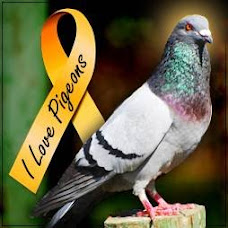Article published Dec 30, 2007
Nonlethal means touted for nuisance bird control
Chemical Avitrol causes pigeons great suffering
By Danielle M. Williamson
TELEGRAM & GAZETTE STAFF
dawilliamson@telegram.com
In her nine years helping sick and injured wildlife, Sigrid Warren had never seen anything like what she witnessed this summer and fall. First, the Gardner woman tried to save two pigeons that violently seized and convulsed. A few weeks later, she came to the aid of a mourning dove with half of its tail ripped out, unable to walk. Meanwhile, colleagues saw pigeons, a sparrow and a blue jay drop from the sky. In October, the city’s animal control officer brought her a ruffed grouse that had flown into a store window and died. After unsuccessful attempts to save the birds, Mrs. Warren learned that several downtown businesses had hired a pest control company to use chemical-treated corn kernels to rid their rooftops of pesky pigeons. Suddenly, the previously baffling bird injuries made sense.
“I’m not trying to advocate that we have 10,000 pigeons in town,” said Mrs. Warren, a certified wildlife rehabilitator. “But animals — not just pigeons — that get into Avitrol can die miserable deaths.”
Mrs. Warren can’t prove that the unusually high number of bird deaths, or the disappearance of the hawk that normally watches over her backyard, are directly attributable to a chemical that pest control companies use to control nuisance birds. Necropsies are costly, and she already had disposed of some of the birds before she learned that Avitrol could have been a factor. From her experience, however, she suspects that some of the birds ate the treated corn, became disoriented, and suffered fatal injuries by flying into cars and windows, or by becoming vulnerable to attack.
Waltham Services, a pest control company permitted by the state to use Avitrol, says the right mixture of the chemical with corn kernels is an effective means of keeping pigeons away from the roofs of clients, but acknowledged that its sometimes lethal effects makes it a less than an ideal solution.
Even the Environmental Protection Agency, which regulates Avitrol, notes in a September report that the chemical poses “an acute risk” to nontarget species, including hawks.
Wildlife rehabilitators and an international organization that offers pigeon control solutions tout nonlethal options to ultimately reduce the pigeon population, and question why Avitrol, which is banned throughout much of Europe and in New York City, is legal here.
Worcester, meanwhile, has naturally reduced its flock of Canada geese, which, like pigeons, are annoying mainly because of their frequent defecation on public property. “Avitrol doesn’t reduce the pigeon population at all, and we’ve never used it to kill off a flock,” said Richard C. Berman, technical manager for Waltham Services. “Basically, we’re moving the problem from point A to point B.”
The mixture of harmless and chemically treated corn is meant to frighten away pigeons that see other members of their flock become distressed from it. Mr. Berman said that while his company offers nonlethal pigeon control solutions, including netting and bird spikes, Avitrol is the most popular because it is the least expensive.
Gardner officials estimate at least 24 pigeons died over the late summer and early fall, while Waltham Services had permits from the state Division of Fisheries & Wildlife to place Avitrol-treated corn kernels at popular pigeon roosting areas.
The company is still using Avitrol in Gardner, but the city has not seen multiple deaths since the fall. Mr. Berman said at the time it was unusual to see so many deaths, especially since his company has been working in Gardner for years. Typically, there are more deaths when a pest control company starts a program, he said.
Since there is no requirement for pest control companies, clients or the state to notify municipalities of the ongoing use of Avitrol, Gardner officials could not immediately explain the deaths. The problem mirrored an incident in Milford in summer 2004, when, unknown to town officials, Milford Regional Medical Center hired a company to use Avitrol, and handfuls of pigeons died in the hospital parking lot.
“We must have tested seven or eight pigeons for West Nile virus,” said Milford Health Agent Paul A. Mazzuchelli. “When people found out it was Avitrol, there was a public outcry.” Milford has since used Avipel, touted as a nonlethal repellant, to keep pigeons away from its bell tower at Town Hall.
Guy Merchant, founder of the nonprofit Pigeon Control Advisory Service, based in the United Kingdom, works with cities and towns throughout the world to naturally reduce the pigeon population, and recently started advising New York City councilors.
Not only is Avitrol dangerous to the birds that feed near or prey on pigeons, but it is also an ineffective means of controlling pigeon problems in the long term, he said. “It staggers me that Avitrol’s allowed to be used as irresponsibly as it is in America,” Mr. Merchant said. “By using lethal means, all you’re doing is increasing flock size. The only beneficiaries are the pest control companies that offer the service.”
When pigeons lose members of their flock, their instinctive response is to “breed open-endedly” to bring flock size back, Mr. Merchant said. His 35 years of experience in the pigeon control field show him that pigeons that lose part of their flock to death will overcompensate, ultimately increasing the flock by 10 percent to 20 percent.
Pigeon Control Advisory Service recommends several solutions for pigeon control: discouraging residents from feeding the birds in congested areas, setting up feeding areas away from the downtown area, and erecting artificial breeding facilities. The group offers its consulting for free. The breeding facilities — 8-foot by 6-foot structures that resemble a garden shed — encourage pigeons to roost and feed in a controlled area. Volunteers, often wildlife rehabilitators, such as Mrs. Warren, go to the structures once a week to remove the pigeons’ eggs and replace them with dummy eggs, Mr. Merchant said.
An article published Feb. 9, 1993, in The New York Times documents the success of such facilities in Basel, Switzerland, starting in 1988. Led by a team of researchers, students and residents built nine pigeon lofts from which they removed 1,200 eggs a year. After 50 months, the pigeon population had fallen 50 percent.
Worcester officials have reduced the city’s population of Canada geese by implementing a program similar to what Pigeon Control Advisory Service recommends for pigeon control. Neighborhood volunteers monitor the birds’ nests in the spring and put vegetable oil on the eggs, ensuring they don’t hatch. James G. Gardiner, acting director of health and human services, said this practice has reduced the city’s flock by 75 geese. “What a difference this has made with the concerts at Elm Park,” Mr. Gardiner said. The city also has a no-feeding ordinance, which has been effective because of an extensive education program, Mr. Gardiner said, adding the pigeon population has visibly decreased since the ordinance was created in spring 2006. Mr. Gardiner said Worcester has not used Avitrol, and believes that reducing the birds’ feeding sources is one of the best long-term solutions.
Mrs. Warren, meanwhile, is hoping for a time when the downtown Gardner area she now calls “the kill zone,” is free of Avitrol, and she doesn’t have to fear for the lives of songbirds and hawks. Gardner Animal Control Officer Lisa A. Gaudet, who took injured pigeons and birds to wildlife rehabilitators, said she felt horrible that Mrs. Warren spent hours trying to help the animals, only to find there was no way to save them. “I’m sure people who feel they have no choice but to use it (Avitrol) would be willing to consider other options if there was a plan in place,” Ms. Gaudet said.
Sunday, December 30, 2007
Illegal Avitrol Used to Control Pigeons in Worcester, Mass.
Labels:
Avitrol,
cruelty to animals,
pigeon control,
songbirds,
sparrows,
wildlife
Subscribe to:
Post Comments (Atom)












1 comment:
Birds are found in every part of the globe.Pest Control is always for most in our minds around the end of spring and the beginning of summer when we see the pests come out in mass.
Post a Comment